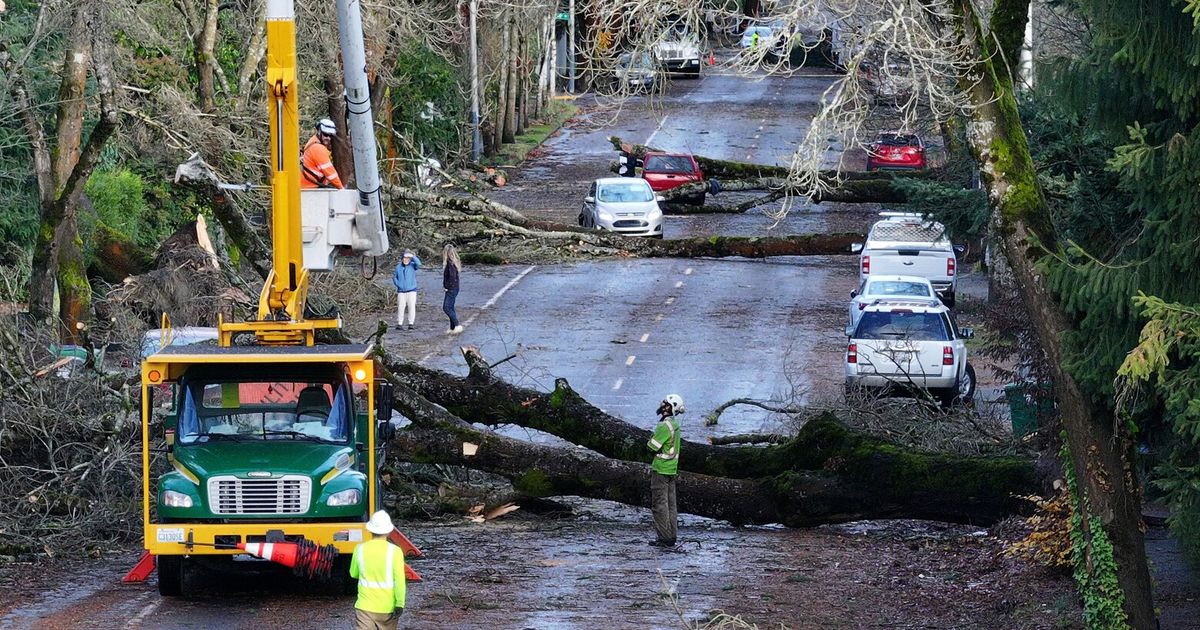
Northern Lights Update: Here’s Where Aurora Borealis Can Be Viewed Tonight
Posted on 10/05/2024

Topline
The Northern Lights can potentially be seen from several northern U.S. states Saturday night, according to a National Oceanic and Atmospheric Administration update, as space weather forecasters predict an increase in geomagnetic activity capable of triggering a strong aurora borealis.
Key Facts
Get Forbes Breaking News Text Alerts: We’re launching text message alerts so you'll always know the biggest stories shaping the day’s headlines. Text “Alerts” to (201) 335-0739 or sign up here.
Where Will The Northern Lights Be Visible Tonight?
States within or partially included in the view line include Washington, Oregon, Idaho, Montana, Wyoming, the Dakotas, Minnesota, Iowa, Wisconsin, Illinois, Indiana, Michigan, Ohio and Maine. Most regions within the states have a low likelihood of seeing the Northern Lights, though the upper edges of Montana, North Dakota and Minnesota have a much higher chance.
How Do You See The Northern Lights?
The hours between 10 p.m. and 2 a.m. will mark the best potential viewing time for the Northern Lights. Those looking to catch a glimpse of the natural phenomenon should do so in areas with no light pollution and clear forecasts.
How Do You Photograph The Lights?
Night mode and longer exposure times on smartphones can help viewers grab photos of the Northern Lights, as well as an increase in camera exposure.
Key Background
Saturday’s favorable forecast comes after a relatively strong showing on Friday night, which was forecast to produce a strong geomagnetic storm and featured a KP index of five. Increases in solar activity have been seen over the last few months ahead of the anticipated peak of Solar Cycle 25, the sun’s 11-year solar cycle which is expected to crest somewhere between late 2024 and early 2026. The cycle is forecast to produce intensifying sunspots (115 to be exact) and increasing geomagnetic storms.
Further Reading
The Northern Lights can potentially be seen from several northern U.S. states Saturday night, according to a National Oceanic and Atmospheric Administration update, as space weather forecasters predict an increase in geomagnetic activity capable of triggering a strong aurora borealis.
Key Facts
Get Forbes Breaking News Text Alerts: We’re launching text message alerts so you'll always know the biggest stories shaping the day’s headlines. Text “Alerts” to (201) 335-0739 or sign up here.
Where Will The Northern Lights Be Visible Tonight?
States within or partially included in the view line include Washington, Oregon, Idaho, Montana, Wyoming, the Dakotas, Minnesota, Iowa, Wisconsin, Illinois, Indiana, Michigan, Ohio and Maine. Most regions within the states have a low likelihood of seeing the Northern Lights, though the upper edges of Montana, North Dakota and Minnesota have a much higher chance.
How Do You See The Northern Lights?
The hours between 10 p.m. and 2 a.m. will mark the best potential viewing time for the Northern Lights. Those looking to catch a glimpse of the natural phenomenon should do so in areas with no light pollution and clear forecasts.
How Do You Photograph The Lights?
Night mode and longer exposure times on smartphones can help viewers grab photos of the Northern Lights, as well as an increase in camera exposure.
Key Background
Saturday’s favorable forecast comes after a relatively strong showing on Friday night, which was forecast to produce a strong geomagnetic storm and featured a KP index of five. Increases in solar activity have been seen over the last few months ahead of the anticipated peak of Solar Cycle 25, the sun’s 11-year solar cycle which is expected to crest somewhere between late 2024 and early 2026. The cycle is forecast to produce intensifying sunspots (115 to be exact) and increasing geomagnetic storms.
Further Reading
Comments( 0 )
0 0 0
0 0 2






















